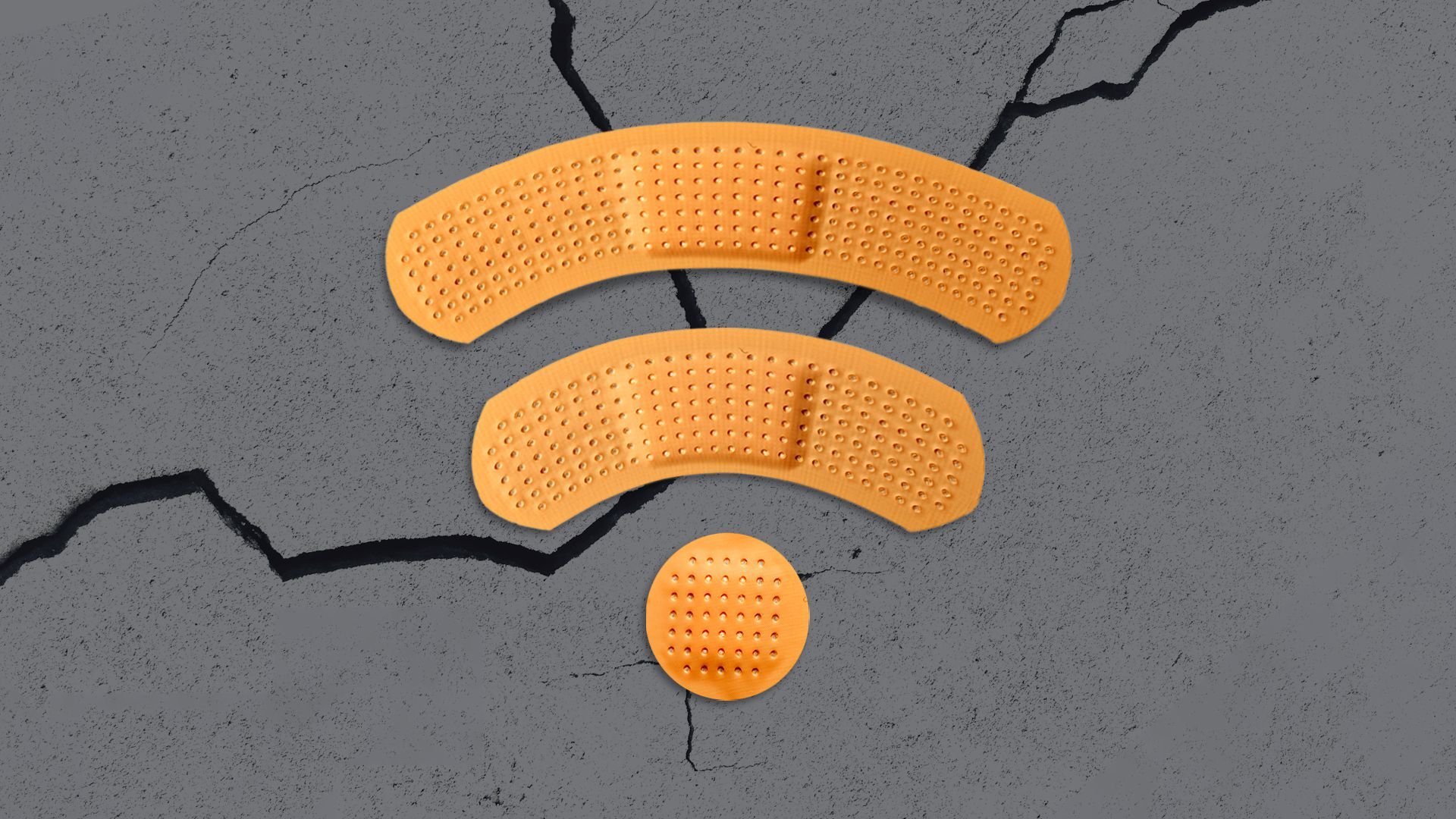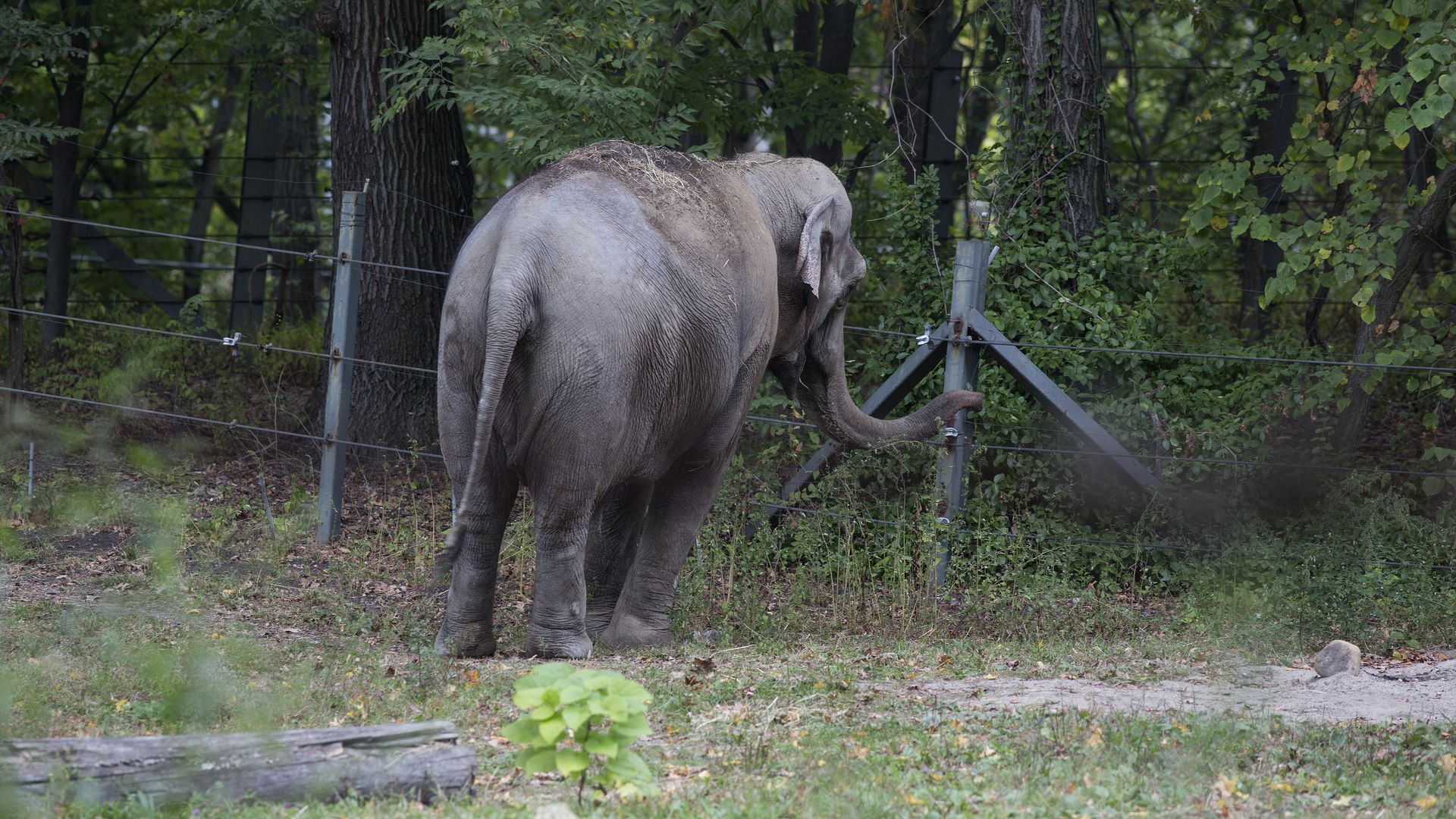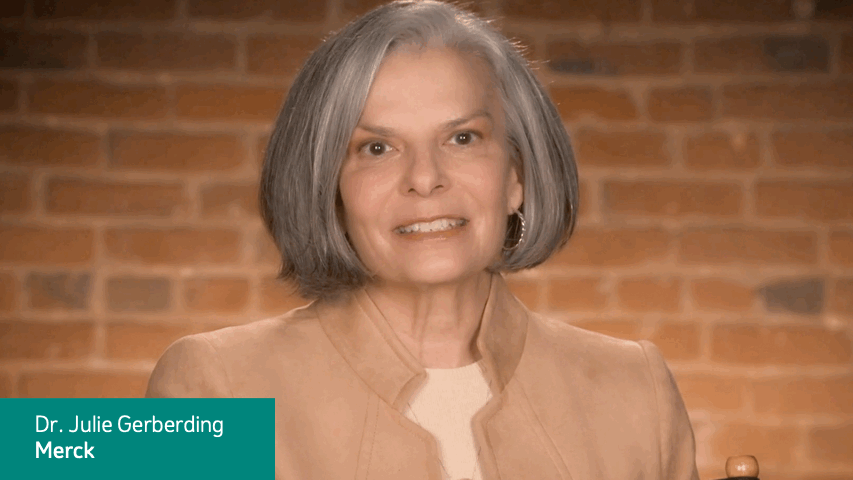| | | | | | | Presented By Merck | | | | Axios Future | | By Bryan Walsh ·May 05, 2021 | | Welcome to Axios Future, where I have now officially lost track of the number of newsletters I've sent out. - If you haven't subscribed, there is no time like the present, unless you're one of those people who believe all moments on the space-time continuum are equal.
- Send feedback, tips and any ideas for what a toddler will eat that isn't mac and cheese (please) to bryan.walsh@axios.com.
Today's Smart Brevity count: 1,783 words or about 6 1/2 minutes | | | | | | 1 big thing: How the pandemic could personalize education |  | | | Illustration: Sarah Grillo/Axios | | | | The pandemic has shaken up the present and the future of education, and one result could be a greater focus on personalized learning. Why it matters: Education has long been a slow-to-change industry, but the forced introduction of remote learning and the movement of some families out of public schools could lead to a technology-forward approach that is more tailored to individual students — and risks leaving the less-advantaged behind. By the numbers: Data from Burbio's School Opening Tracker indicates that as of May 3, just 3.3% of K-12 students in the U.S. are still attending virtual-only school, compared to more than 60% at the start of the 2020-21 school year.. - Still, nearly a third of K-12 students are attending hybrid classes that mix virtual and in-person learning, and Burbio notes the percentage of students opting out of in-person education remains over 50% in most cities.
- A recent poll from Politico and the Harvard T.H. Chan School of Public Health found 29% of parents want their child to be in remote or hybrid school for the next year, while a RAND Corp. survey from last fall — entitled "Remote Learning Is Here to Stay" — found 1 in 5 school districts were planning or at least considering a post-pandemic remote option.
What's happening: Lingering — if somewhat scientifically overstated — fears of the virus are behind some of that preference for remote, but some parents report their children have thrived with online schools. - "There is a minority of parents, a minority of students and even a minority of teachers for whom virtual schooling is the preferred mode," Heather Schwartz, a senior policy researcher at RAND and the director of the study, told the New York Times.
What's next: While the forced march to remote education during the pandemic left both parents and schools unprepared, new tools offer the possibility of a more personalized approach to teaching via online classes. - This morning the software company Adobe announced it would be partnering with leading online education platform Khan Academy to co-create online lesson plans that emphasize creative skills.
- The Khan Academy approach aims to meet students where they are, allowing parents and educators to craft classes to individual skill sets and achievement levels.
- "Personalization would have been a utopian idea 30 years ago," says Salman Khan, the founder and CEO of Khan Academy, which saw its usage nearly triple after schools closed last spring. "But now we can personalize what the student needs versus giving everyone the same thing."
What to watch: The rise of home schooling, arguably the most personalized form of education. - The percentage of families home-schooling their children more than doubled during the pandemic to 11% of U.S. households, according to data from the Census Bureau.
The catch: Students from disadvantaged backgrounds — especially those who lack reliable internet access — risk being left behind altogether, and the shift to a more personalized approach threatens to widen the already yawning education gap in the U.S. The bottom line: As the U.S. grows more fractured and polarized, in-person public education has remained one of the few experiences that most Americans share. - A more personalized approach to education will change that — for better and for worse.
|     | | | | | | 2. The economic benefits of closing the digital divide |  | | | Illustration: Annelise Capossela/Axios | | | | A new report makes the case that closing the gap in broadband access could add hundreds of thousands of jobs and tens of billions of dollars in economic output. Why it matters: As both education and work shift online, those who don't have reliable internet access will be left behind, which hurts them and the country as a whole. By the numbers: Deloitte found in a new report that as of 2014, 16 million Americans — roughly 5% of the population — lacked access to broadband internet speeds of at least 4 megabytes per second (Mbps). - In 2019 — after $54 billion in investment — 14.4 million Americans still lacked access to broadband under the FCC's new speed threshold of at least 25 Mbps for downloads.
What could have been: Deloitte estimates more than 875,000 new jobs and $186 billion in additional economic output would have occurred in 2019 had there been a 10-point increase in broadband access in 2014. Between the lines: Dan Littmann, a principal at Deloitte and one of the authors of the report, points out that the broadband gap increasingly exists not because the government and internet companies have failed to invest but because "internet performance expectations and needs continue to increase." - "Larger households may feel as though they are 'left behind' because they can't all work or learn simultaneously from home," he adds.
What's next: One new option for expanding broadband availability is fixed wireless access installations that can bring 5G to both rural and urban areas that lack faster internet, says Durga Malladi, senior VP of engineering at Qualcomm. - A single fixed 5G wireless point can provide speeds of up to 1 gigabyte per second for homes and businesses at a range of some 3 miles.
The bottom line: "In today's world, connectivity is no longer a luxury," says Malladi. "It's a necessity." |     | | | | | | 3. Creating "digital twins" to study long-haul COVID |  | | | Illustration: Sarah Grillo/Axios | | | | Researchers are creating "digital twins" of coronavirus patients to study long-haul COVID-19. Why it matters: An estimated 1 in 20 COVID-19 patients are likely to suffer from some long-term effects, but doctors still don't know why or how best to care for them. Digital twins promise to speed efforts to investigate a major medical mystery. How it works: A digital twin is a virtual representation of an object, a system or, in this case, a long-haul COVID-19 patient. - "Digital twins allow you to perform all kinds of testing, but in a virtual simulation," says Jeremy Ford, vice president of strategic giving and social innovation at Dell Technologies.
What's happening: This morning Dell announced a collaboration with i2b2 transSMART Foundation to create and study digital twins of tens of thousands of long-haul COVID-19 patients. - Using Dell's computing power and data storage infrastructure, i2b2 transSMART will pull in de-indentified patient data, ranging from hospital records to ongoing information from health wearables.
- The resulting digital twins will be shared with scientists from more than 200 hospitals and research centers from around the world, who will be able to perform millions of individualized treatment simulations to determine the best possible therapies for patients based on their own medical history, all in a fraction of the time that would be required for real-life trials.
- The initial round will involve 70,000 digital twins, with the potential to expand to up to 2 million over the next four years.
What's next: "The same kind of approach can be applied in the future to autoimmune disorders, degenerative disorders, cancers and other areas," says Ford. |     | | | | | | A message from Merck | | Why self-care is crucial for work culture | | |  | | | | Merck's Teal Talks inaugural episode focuses on the importance of well-being for business success. Arianna Huffington: "People have finally recognized that performance is tied to the employee experience and companies have an incredible opportunity at this moment to transform culture." | | | | | | 4. U.S. fertility dips to its lowest rate since the 1970s |  Centers for Disease Control and Prevention's National Center for Health Statistics; Chart: Michelle McGhee/Axios The fertility rate in the U.S. dropped by 4% last year compared to 2019, the lowest it's been in nearly 50 years, according to provisional data from the National Center for Health Statistics, my Axios colleague Marisa Fernandez writes. Why it matters: The data corroborates previous surveys that predicted a "COVID baby bust," with women reporting they were postponing pregnancy and having fewer children, as well as surveys indicating less sexual activity overall. By the numbers: There were 55.8 births per 1,000 women age 15 to 44 last year. It is the sixth straight year the number of births in the U.S. has fallen, CDC data shows. - There was an overall decline in all age groups between 15 to 44. Brady Hamilton, the lead author of the study, called those drops "unusual" and "extraordinary." Births had been rising for women in their 30s, he said.
- The preterm birth rate declined for the first time since 2014 to about 10% in 2020.
The big picture: Fertility rates in the U.S. and around the world have been falling for years as women in developed countries have gained more freedoms, received more education, and in some cases, gotten increased access to birth control. Yes, but: Though significant, the decrease of 142,000 births last year is about half of what experts predicted. Researchers saw closed child centers and schools as key reasons for slowed births. My thought bubble: It's possible that we could see a post-COVID-19 baby boom, as a rapidly growing economy — plus additional help for families from the government — encourages prospective parents to have children they put off during the pandemic. Go deeper: U.S. population growth is on a downward slope |     | | | | | | 5. Worthy of your time | | Trump is Mark Zuckerberg's problem. Again. (Will Oremus — New York Times) - The Facebook Oversight Board's decision to uphold the social network's temporary suspension of the former president puts the ball back in Zuckerberg's court.
The pastry AI that learned to fight cancer (James Somers — The New Yorker) - A humble Japanese program designed to identify different baked goods shows the power — and startling flexibility — of computer vision AI.
Why AI is harder than we think (Melanie Mitchell) - On the other hand, as this pre-print paper by a veteran computer scientist shows, the fast pace of AI breakthroughs doesn't mean we'll have systems that can think anytime soon.
Why politically guided science is bad (Noah Smith) - The economist and blogger — whose excellent Substack is worth subscribing to — makes a case that shouldn't need to be made: that research shouldn't be beholden to politics, whatever they are.
|     | | | | | | 6. 1 animal rights thing: Happy the elephant gets her day in court |  | | | Patty, an Asian elephant who lived with the Bronx Zoo's other remaining elephant Happy until they were separated, is seen in October 2019. Photo: Andrew Lichtenstein/Corbis via Getty Images | | | | Happy, an Asian elephant kept in New York's Bronx Zoo, will get a habeas corpus case at the New York State Court of Appeals. Why it matters: This represents the first time the highest court in any English-speaking jurisdiction will hear such a case brought on behalf of a nonhuman animal, and could represent a landmark moment for both animal rights and zoos. How it works: Habeas corpus is a legal term that means "you shall have the body," and usually revolves around the question of whether a citizen's detention can be justified. Background: The case was brought on behalf of Happy by the Nonhuman Rights Project, a New York-based legal nonprofit that focuses on animal rights. - Happy has lived mostly alone at the zoo since 2002. Lawyers at the Nonhuman Rights Project adopted Happy as a client in 2018, arguing she was being unlawfully detained by the Bronx Zoo and ought to be granted a writ of habeas corpus and transferred to an elephant sanctuary.
The other side: Lower courts have repeatedly taken the side of the Bronx Zoo, which said in a 2020 statement that "all decisions regarding the health and welfare of the animals at the Bronx Zoo should and will be made by the zoo's animal experts who know them best." What to watch: Happy will face an uphill battle at the New York Court of Appeals, but Judge Eugene M. Fahey, an associate judge there, has written in the past that the question of whether a nonhuman animal is entitled to habeas corpus "will have to be addressed eventually." The bottom line: Extending rights long reserved for humans to animals would be a new legal frontier, but the more scientists learn about animal cognition, the sharper that question will become. |     | | | | | | A message from Merck | | One key to a resilient company: self-care | | |  | | | | Self-care and well-being are important not just to individuals but to businesses and their success. The reason: Creating a shared success mindset where leaders invest in their people strengthens organizations. Learn how leaders can endorse the importance of well-being in the workplace. | | | | | | Axios thanks our partners for supporting our newsletters.
Sponsorship has no influence on editorial content. Axios, 3100 Clarendon Blvd, Suite 1300, Arlington VA 22201 | | | You received this email because you signed up for newsletters from Axios.
Change your preferences or unsubscribe here. | | | Was this email forwarded to you?
Sign up now to get Axios in your inbox. | | | | Follow Axios on social media:    | | | | | |








No comments:
Post a Comment